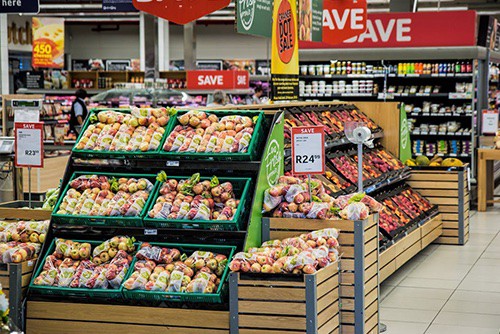How To Calculate Profit Margin For Small Business Owners
As a small business owner or manager, you need to speak the language of your ind...

One of the keys to running a successful business is choosing the right retail price strategy. If you set your price too low, you may have a hard time turning a profit. If you set your price too high, you might lose market share.
In this article, we discuss some of the steps that go into setting the best retail price strategy for your business and give you strategies to help you decide.

Retail pricing is the practice of placing a value on the products or services that your business offers. Setting the right price point, though, is much more of a balancing act than this definition lets on.
As we mentioned, if you pick a number that’s too low, your business could have a hard time turning a profit. On the other hand, if you pick a number that’s too high, your customers might respond negatively and turn to other brands.
What goes into choosing the right retail price strategy? Examples of variables include:
Even with those variables to guide you, the process of setting prices for products and services is different for every business.
Let’s take a look at some of the top-recommended steps for retail business owners.

One of the first steps in building a retail price strategy is analyzing the costs associted with bringing your product or service to market.
If the price you choose doesn’t at least cover all those costs, your business is going to lose money with each sale.
Your customer base is the lifeblood of your business, so it may be helpful to know who those people are and how your business can best serve them.
While it might not be practical to get to know who they are individually, it may make sense to understand them as a group — demographic information, their likes and dislikes, and even, perhaps, what they’re willing to pay for similar products.
Value propositions come in many shapes and sizes. But the heart of the matter is to make your business and the products or services it offers as attractive to customers as possible.
Building a business strategy informs the process of setting a retail price by helping you answer questions like:
When you’ve answered those questions, your business will be better positioned to choose the right retail price strategy for the goals you’ve set.

If your business sells its products to other businesses instead of directly to consumers, a wholesale strategy might be exactly what you’re looking for.
To set a wholesale price, first calculate the cost of goods manufactured (COGM) and then factor in transportation, overhead, and a profit margin that will keep your business in the black.
If your business sells another manufacturer’s product, consider using the manufacturer suggested retail price (MSRP) as your base. Adopting this approach takes the guesswork out of creating your own pricing strategy.
Channel-based pricing is a relatively new strategy that takes into account where (via what medium) you sell your products.
With this method, your business would, for example, charge one price for products sold in-store, another price for products sold through your website, and a third price for products sold through social media.
Keystone pricing is a strategy based on the wholesale price mentioned earlier in this article. But with keystone pricing, you would double the wholesale price you paid for the products and use that as a base for what you’ll charge your customers.
With anchor pricing, your business displays a lower, discounted price next to the higher, original price. The higher price gives customers a point of reference and makes them feel like they’re getting a deal when they pay the discounted price.
Multiple pricing — also known as bundle pricing — is when you group more than one product of the same kind together at a specific price point.
For example, instead of charging X for a single T-shirt, you can charge Y for a pack of three.
Multiple pricing is often an easy way to streamline your business’s marketing campaigns because you can promote a single price point instead of several.

Adopting a dynamic retail price strategy means your business will adjust prices often based on factors such as supply, demand, and competitor pricing.
A good example of dynamic pricing is when the price of gasoline goes up on the weekends and holidays. This is often in response to 1) the demand for more travel during those times, and 2) the activities of other gas stations in the area.
Premium pricing is when you consciously choose to set your price point higher than your competition.
Implementing premium pricing can help potential customers see your products as part of a luxury brand that is worth the higher price they’ll pay.
Discount pricing is the practice of offering sale codes, coupons, or other cost-cutting programs as a way to entice consumers to purchase your products.
This strategy is often used as a supplement to the regular price point to move items off the shelves. But be careful — offering discounted prices too often can lower the perceived value of your brand so that customers will be unwilling to pay full price on a regular basis.
Competitive pricing is the practice of using the price point of similar retail establishments in your product space as a benchmark for the numbers you choose.
When you use competitive pricing as a guide, the point is to set your own price a bit lower in order to attract customers to your product.

Penetration pricing is choosing to keep prices low — lower than competitors in the same space — for a period of time to introduce the brand into the market and gain penetration and recognition.
When implementing penetration pricing, you may want to resist the urge to raise your prices too soon or too abruptly. Doing so can cause customers to leave for other brands.
Psychological pricing is the practice of setting your price points in such a way that they end with odd numbers. For example, you would set the price at $99 instead of rounding up to $100.
The most popular and visible method of psychological pricing is the price of a gallon of gas, which almost always ends with 9/10. So, even if the price displayed is $4.35 per gallon, the real price is $4.35 and 9/10 (which is, basically, $4.36 per gallon).
The stations drop that tenth of a cent as a way to make the price more psychologically appealing.
Loss-leading pricing is the process of discounting the price point on one item and then upselling customers on other items to make up the difference.
This strategy depends on the ability of your staff to provide the right mix of customer service without making patrons feel pressured or forced to buy.
Cost-plus pricing is similar to wholesale pricing but is targeted at the end user, not another business. In many respects, this is one of the easiest ways to set a price point.
First, add up all the costs that went into making the product — materials, labor, shipping, etc. — then choose the amount of profit you want to make (usually a percentage) and tack that on top.

Once you’ve settled on the right retail price strategy, you’ll no doubt want to continue to find ways to manage your business better.
The Sling app can help.
Sling is a suite of tools that gives you access to many of the tools you may need to manage your team better, including:
Try the Sling app for free today and see how an integrated software solution can improve your workforce management by leaps and bounds.
For more free resources to help you manage your business better, organize and schedule your team, and track and calculate labor costs, visit GetSling.com today.
See Here For Last Updated Dates: Link
One last thing: This content is provided for informational purposes only and is not legal, accounting, tax, HR, or other professional advice. You should contact your attorney or other relevant advisor for advice specific to your circumstances.
Schedule faster, communicate better, get things done.